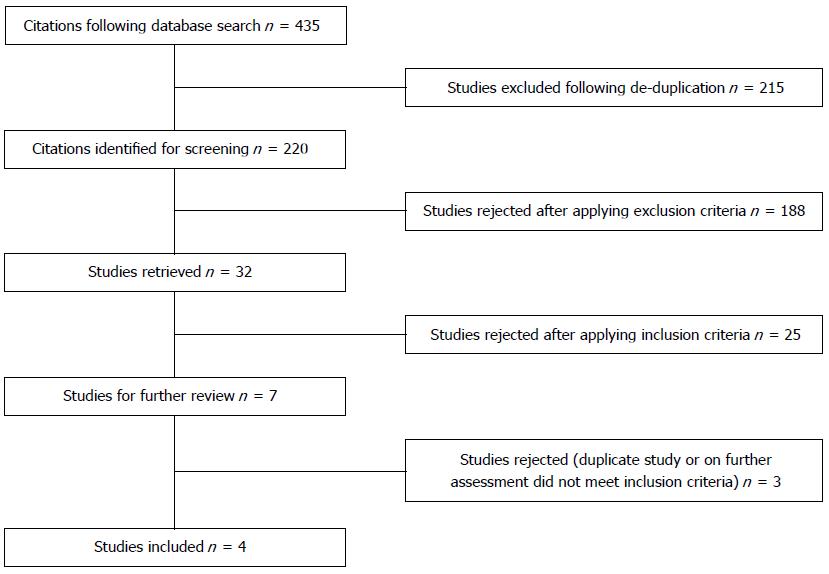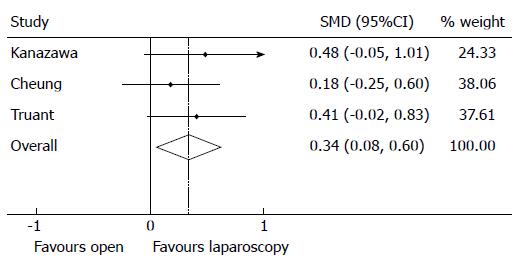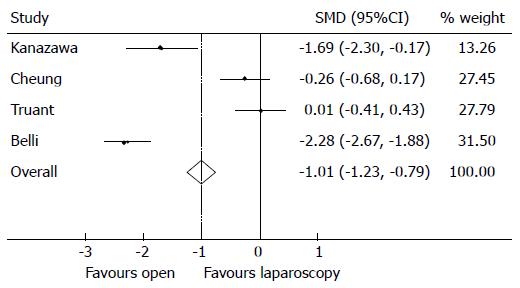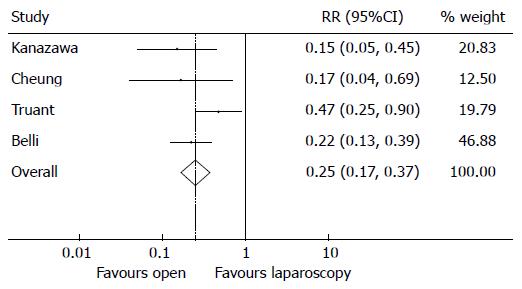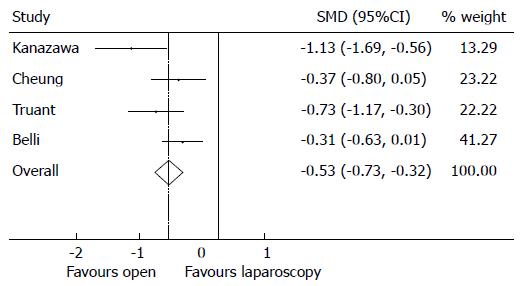Copyright
©2014 Baishideng Publishing Group Inc.
World J Gastroenterol. Jul 7, 2014; 20(25): 8274-8281
Published online Jul 7, 2014. doi: 10.3748/wjg.v20.i25.8274
Published online Jul 7, 2014. doi: 10.3748/wjg.v20.i25.8274
Figure 1 Flow chart illustrating summary of literature search results.
Figure 2 Forest plot comparing tumour margins following open and laparoscopic approaches, standard mean difference with 95%CI, P = 0.
011. I2 measure of heterogeneity 0.0%, P = 0.631. SMD: Standard mean differences.
Figure 3 Forest plot comparing blood loss following open and laparoscopic approaches, standard mean difference with 95%CI, P < 0.
001. I2 measure of heterogeneity 96.2%, P < 0.001. SMD: Standard mean differences.
Figure 4 Forest plot comparing relative risk of blood transfusions following open and laparoscopic approaches, 95%CI, P < 0.
001. I2 measure of heterogeneity 0.0%, P = 0.845.
Figure 5 Forest plot comparing standard mean difference of operative times following open and laparoscopic approaches, with 95%CI, P = 0.
142. I2 measure of heterogeneity 24.2%, P = 0.266. SMD: Standard mean differences.
Figure 6 Forest plot comparing relative risk of post-operative morbidity following open and laparoscopic approaches, with 95%CI, P < 0.
001. I2 measure of heterogeneity 41.1%, P = 0.165.
Figure 7 Forest plot comparing standard mean difference of length of stay following open and laparoscopic approaches, with 95%CI, P < 0.
001. I2 measure of heterogeneity 59.8%, P = 0.058. SMD: Standard mean differences.
-
Citation: Twaij A, Pucher PH, Sodergren MH, Gall T, Darzi A, Jiao LR. Laparoscopic
vs open approach to resection of hepatocellular carcinoma in patients with known cirrhosis: Systematic review and meta-analysis. World J Gastroenterol 2014; 20(25): 8274-8281 - URL: https://www.wjgnet.com/1007-9327/full/v20/i25/8274.htm
- DOI: https://dx.doi.org/10.3748/wjg.v20.i25.8274









